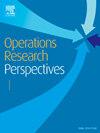A new case of rank reversal in analytic hierarchy process due to aggregation of cost and benefit criteria
Abstract
Rank reversal in Analytic Hierarchy Process (AHP) due to introduction or removal of a new alternative is well documented in literature. However, rank reversal due to the aggregation of benefit and cost criteria has not been addressed with requisite rigour. This paper demonstrates a new type of rank reversal in AHP which can arise due to the method (ratio or difference) and approach (sum 1 or sum 2) used to aggregate the benefit and cost criteria. Numerical examples, mathematical analyses and computer simulations have been used for demonstration of results. It is found that considering the benefit and cost criteria separately (sum 2 approach) while aggregating them can yield irrational ranking. It is also demonstrated that ratio method of aggregation is untenable in additive variants of AHP as it yields identical ranking in sum 1 and sum 2 approaches. Difference method of aggregation considering the benefit and cost criteria together (sum 1 approach) is most logical and sound in additive variants of AHP. The results also counter the notion that multiplicative AHP is immune to rank reversal between ratio and difference methods of aggregation. Besides, sum 1 and sum 2 approaches produce different raking of alternatives in multiplicative AHP irrespective of the method of aggregation. Outcome of this research will be helpful while choosing the appropriate method and approach for aggregation of benefit and cost criteria in different variants of AHP.

 求助内容:
求助内容: 应助结果提醒方式:
应助结果提醒方式:


